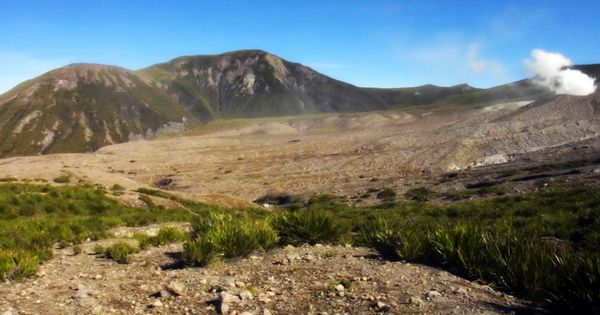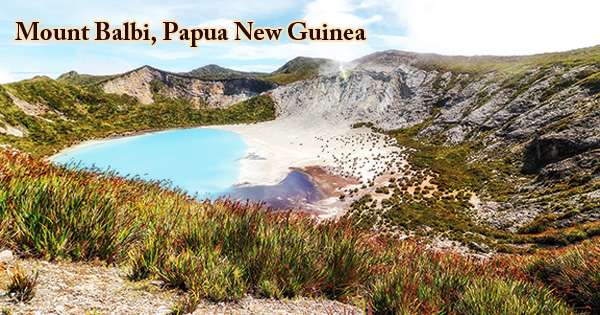Mount Balbi, also known by local people as Tutue, is a Holocene stratovolcano (active volcano) situated in the northern part of Bougainville Island, Papua New Guinea, and is the province’s highest point, rising to 2,715 m (8,907 ft). The island’s highest point is a gentle prominence at 05°54′09″S 154°59′28″E. It is not clear if, as some local myths say, the volcano erupted in historic times. At Balbi’s 600 m wide summit crater and on its western flank, an active fumarole field is located.
Classified as a strato-volcano and classified as active in history, Balbi did not erupt. The volcano’s current activity is limited to solfataras in the summit region and in the north-east amphitheater, and to hot springs on the flanks. East of the summit, there are five volcanic craters, one of which contains a crater lake. Dense tropical rain forests up to 1220 m (4000 ft), bamboo and moss forests between 1220 m and 2290 m (4000 ft – 7500 ft) and alpine rushes above 2290 m cover the flanks of the volcano.

(Mount Balbi)
On the southern, NE, and northern flanks of the volcano, three broad amphitheater-shaped valleys have been formed by debris avalanches. The largest of these is 7 km in length 3 km in width and 610 m in depth on the northern side. The volcano is covered with dense forests up to a height of 1300 m, followed by thickets of bamboo dominating the elevation of 1300 m to 2300 m. Above 2300 m, moss prevails.
For the activities of Balbi volcano in the 1980s and 1990s, a few, mostly aerial observations are visible. The evidence of vigorous fumarolic activity in the second summit crater in particular (Crater B). No major changes have been observed, but the findings show that the volcano is only dormant. Fumarolic activity was only detected in Crater B, around 600 m in diameter, during a survey in 1984 (the second crater seen from the south). They observed boiling mud pools and up to 12 large, very active fumaroles and several smaller ones.
The Rabaul Volcano Observatory (RVO) announced that on May 7th, 2008, the Balbi volcano had an eruption. The report could not be checked and on satellite imagery, there was no ash visible. RVO later stated that Balbi did NOT erupt on 7th May and that it was referring to thunderstorm activity in the reports it had.
The last major eruption from the Balbi volcano occurred between 1800 and 1850 and caused casualties, according to volcano reporter John Seach. During this eruption, Nuees ardentes were emitted, possibly from crater B.
Information Sources:
















